Bedroom plants might just be the secret ingredient for you to get a better night’s sleep.
Surprising, right?
When it comes to creating a sleep-friendly bedroom, you might not immediately think about adding plants.
Perhaps you don’t feel like you have a green thumb.
Or you’re not that into plants.
Maybe you travel so much or are away from home so often that you don’t think you can take care of anything, even a living plant.
I’m about to change your mind. (Well, I hope I am…..)
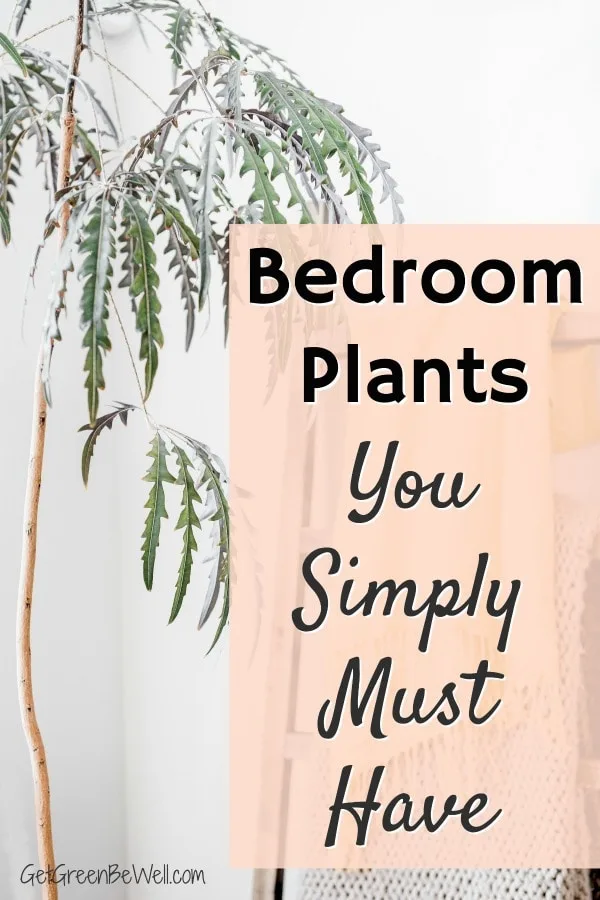
Why You Want Plants in Your Bedroom
Your bedroom is where you might spend the most time of any room in your house. Sure, it feels like you LIVE in your living room or kitchen, but when it comes down to clocking the number of hours you spend in any one place, it is probably your bedroom.
Which is why you really want to focus your resources on creating a healthy, happy, stress-free atmosphere in your bedroom.
And plants can do that.
Houseplants in a bedroom have been shown to:
- Help you sleep better
- Increase oxygen in the air
- Filter out nasty toxins and pollutants (here’s the science behind how plants remove toxins)
- Reduce your stress level
- Boost your mood
- Add humidity to indoor air
- Connect you more to the natural world
If there was a pill that could do all of these things, would you take it? If so, then why not consider adding a plant or two to your bedroom?
The Space Age Science of Plants
A few decades ago, when the world was all jazzed up about sending humans to live in space, NASA scientists realized there was one VERY big problem.
Humans give off carbon dioxide. Building materials and components of a home (even a home in outer space) off gas little bits of potentially toxic materials into the air of the living quarters. All of these things add up over time. And since astronauts can’t just open the windows of the space station to get fresh air in and let the toxins out, they were going to need to fix this life-threatening problem.
Not going shopping yet? Want to remember these plants? Be sure to Pin this article to remember! (And share with your friends!)
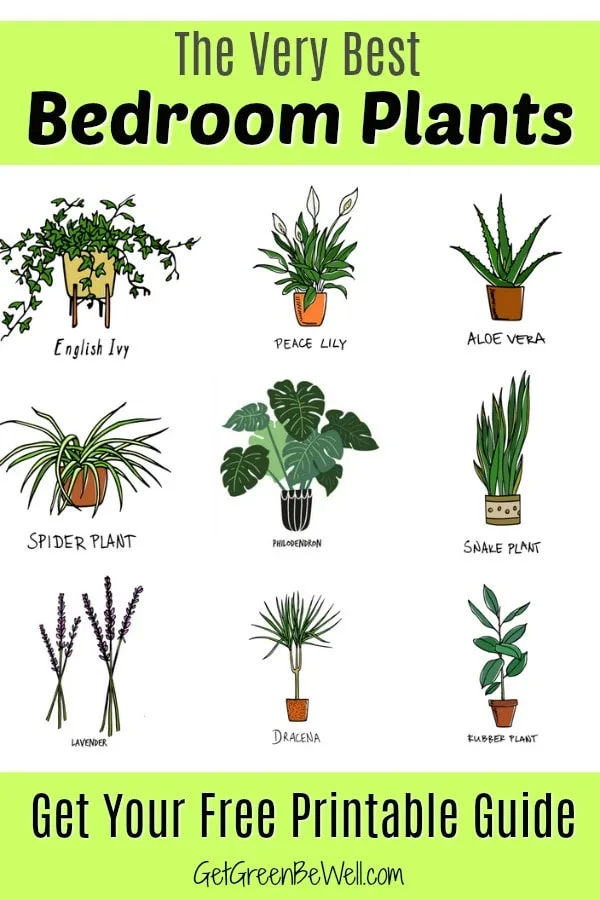
One of the many wonderful things to be discovered thanks to the space program is the life-changing knowledge of how plants can help to purify our air inside our homes.
Dr. B.C. Wolverton did ground-breaking research and found that many plants will remove toxic chemicals from the air, including formaldehyde, benzene, and ammonia. Plus, the plants will also give off oxygen, which creates purer air for you to breathe. He shared his research results in the book How to Grow Fresh Air. It is a fabulous book that I reference often (especially since it’s a very easy read and he details which plants are best for removing which chemicals in plain language).
So it turns out that plants work just like those expensive air filters you might buy – and then have to change the filters all of the time.
Biophilia
You might not have heard of the term bioiphilia before. It’s a relatively new concept created in 1984. But it’s origins go back to the very beginning of mankind.
Biophilia is a concept that humans are inherently seeking connections with nature. Edward O. Wilson, the biologist that coined the term, defines biophilia as “the urge to affiliate with other forms of life.”
Which doesn’t mean that you have to live in the jungle or add 100 houseplants to your home. Far from it.
Incorporating biophilia and biophilic design in your home can be as simple as adding artwork of nature scenes, a few shells or pieces of driftwood that you love, or home décor with patterns of nature, including waves, leaves, or floral designs.
Obviously, adding houseplants to your home décor would be an amazing way to include biophilic design into your home, too!
As a WELL AP, I always look for ways to incorporate biophilia and biophilic design into living and working spaces. For a building to be WELL Certified (meaning it’s a building that protects and promotes good health, both physically and emotionally, for its occupants), it MUST have a biophilia plan that incorporates nature, nature patterns and nature interaction for those that live or work in the space.
There are bonus points (literally) for adding plants, plant beds or living walls to the interior and exterior design of the building, too. So adding natural elements to your living space is a big deal when it comes to creating a healthier space.
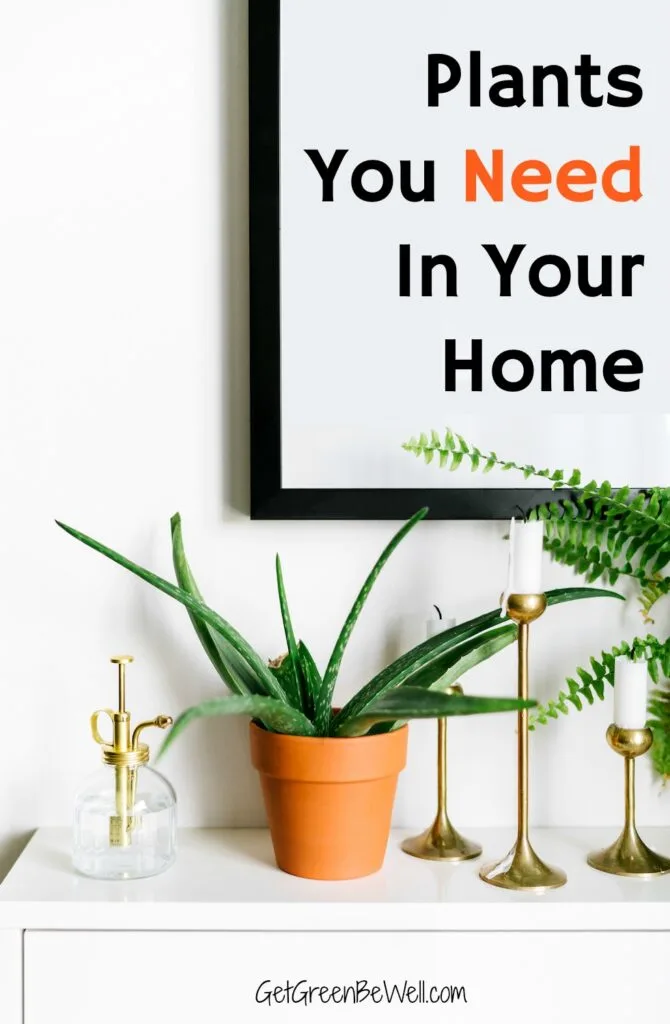
Best Plants for Your Bedroom
Enough science and research, already. Now’s the time to get excited about going shopping for some plants.
The plants below are some of the very best plants to add to your bedroom. But there are others. Read How to Grow Fresh Air or Houseplants for a Healthy Home (also one of my favorite books about plants + health) for even more ideas.
And be sure to check out the helpful houseplant tips below so that you have success with plants in your bedroom for better sleep.
Did you know you can buy plants on Etsy and Amazon?!? How crazy is that? I’ve added links for each type of plant so you can go shopping online.
Snake Plant (Mother-in-Law’s Tongue)
If you hate taking care of plants, are pretty sure you’re going to kill the houseplant, and want the biggest bang for your buck, then a Snake Plant is the best choice for you.
Also called Mother-in-Law’s Tongue (because of the sharp looking leaves), Snake Plant has become one of my absolute favorites because they are so hard to kill. Their ability to survive total neglect has won me over.
Snake Plants are among the very BEST at purifying the air, too. Research has shown that they are among the 10 best plants to purifiy the air, removing pollutants such as benzene, formaldehyde, toluene, xylene and trichlorothylene.
Plus, snake plants convert carbon dioxide into oxygen at night. Most plants do the oxygen conversion during the day. So adding plants that produce more oxygen at night is a good thing for you in your bedroom if it leads to better sleep.
Mother-in-Law’s Tongue does best with low light conditions and not in direct sunlight. Don’t overwater! And dust the leaves every now and then so the plant can perform its best.
Pothos
This one is my absolute favorite. I love the color of the Golden Pothos. It’s bright and cheery and adds color to any room.
I have had a Golden Pothos in my house for a decade. When I moved into a RV to travel and found out that we had toxin off gassing problems in the new RV and extremely elevated formaldehyde levels in our indoor air, I immediately added Golden Pothos plants to our trailer.
In fact, I made sure the plant was by my bedside when I was sleeping.
Pothos is excellent at filtering out formaldehyde, benzene, xylene and toluene. Plus, it gives off a lot of oxygen during the day.
This plant takes a lot of neglect. I usually forget to water it for weeks. And I’ve dragged Pothos plants across the country, usually bouncing around in the shower of the RV for hours on the road, and then in changing light conditions wherever we were staying.
And they still survived and look better than ever.
Underwatering Pothos would always be preferable rather than overwatering.
Pothos is a trailing plant that can get quite long. Trim the plant back if you need to.
Philodendron
Another super easy plant to grow is Philodendron. This trailing plant is among the best for beginner gardeners to try.
There are close to 500 species of Philodendron, so you’ll have your choice of varieties to choose from! Different types of Philodendron range from trailing plants, plants that grow up poles, potted plants, and huge outdoor species with massive leaves.
I’ve grown several different varieties of Philodendron. I can attest to the fact that these plants can take a beating and will still survive. If you’re scared of growing houseplants, Philodendron might just change your mind.
Philodendrons clean the air from pollutants like a champ.
These plants tolerate a lot of different lighting conditions. Always strive to underwater rather than overwater, though. Other than that, they don’t require too much care.
English Ivy
This trailing plant is often associated with English country sides, topiaries, and romantic living.
English Ivy will grow fast. It also pumps oxygen out during the day and removes formaldehyde, xylene, benzene and trichloroethylene from the indoor air.
While ideal conditions for the plant are bright, indirect light, English Ivy is pretty hardy and can survive in many lighting conditions.
Spider Plant
This super easy plant to grow is often found in hanging baskets, although it can certainly be in a pot on a shelf, too. Spider Plants are known for the little plants that grow off of the main plant. They look like little “spiders,” but can easily be removed and propagated into new plants.
Spider Plant does more than just filter out benzene, toluene, formaldehyde and xylene from the air. It actually helps to scrub the air, too.
The wax on the leaves of Spider Plants can trap tiny particulate matter, such as dust, mold and smoke, that’s in the air. A study published in Air Quality, Atmosphere and Health says that this plant removes those pollutants. Which means less dust and mold in your indoor air to breathe in.
Spider plant likes medium to bright light. Water this one more frequently than most, especially if it’s a hanging plant. In less humid conditions, you might want to mist this plant daily to keep it hydrated.
Rubber Plant
If you want a bold statement piece for your bedroom, then a Rubber Plant might be the plant for you. The tree-like plant can grow pretty big, with large green leaves that need to be dusted every now and then to keep its air purifying properties working strong.
The formaldehyde-removing plant likes to be kept moist, so be sure you have enough time to keep this plant watered (and set yourself a schedule to take care of it). You’ll also need bright, indirect light, so this one won’t work in a dark room.
ZZ Plant
This fabulous plant has a unique name, short for Zamioculcas zamiifolia. It’s much easier to say ZZ Plant.
It’s large, upright stalks with leaves makes a more modern architectural statement than trailing houseplants and hanging planters.
Not only does the ZZ plant give off oxygen, but it’s been tested as one of the best plants for removing xylene, according to King Mongkut’s University of Technology in Bangkok.
I’ve had one of these and it worked like a champ. I’d forget to water it for weeks and it still kept on living. It works in a variety of light levels, from low light to bright light (though not full, direct sun). Don’t overwater this plant. It will be okay if it dries out for a while.
The only downside is that these plants tend to be a bit more expensive than other traditional houseplants. You can easily find them in garden centers.
Other Great Plants to Add to Y0ur Bedroom
There are so many plants that I can’t name them all here. I highly suggest you buy one of the two books listed below for more information on the best plants for your situation (both books are super easy to read and understand).
The following are also great plants to add to your bedroom or home. Many of them have the additional benefits of flowers or medicinal properties.
- Gerbera Daisies
- Bamboo Palm
- Peace Lily
- Valerian
- Gardenia
- Aloe
- Lavender
- Dracaena
Helpful Tips for Adding Plants to Your Bedroom
While adding plants to your bedroom is great for your health and better sleep, you still want to be happy with what you bring into your bedroom.
Consider your décor style. Are you a fan of minimalism and modern lines? Then the Snake Plant will be your best pick to complement your décor.
More of a romantic? Then trailing plants such as English Ivy might be a better fit for you.
Your light conditions in your bedroom are also a huge factor in picking out a plant. If you’ve got a wall of windows and full sun all day, then a ZZ Plant might not be your best bet.
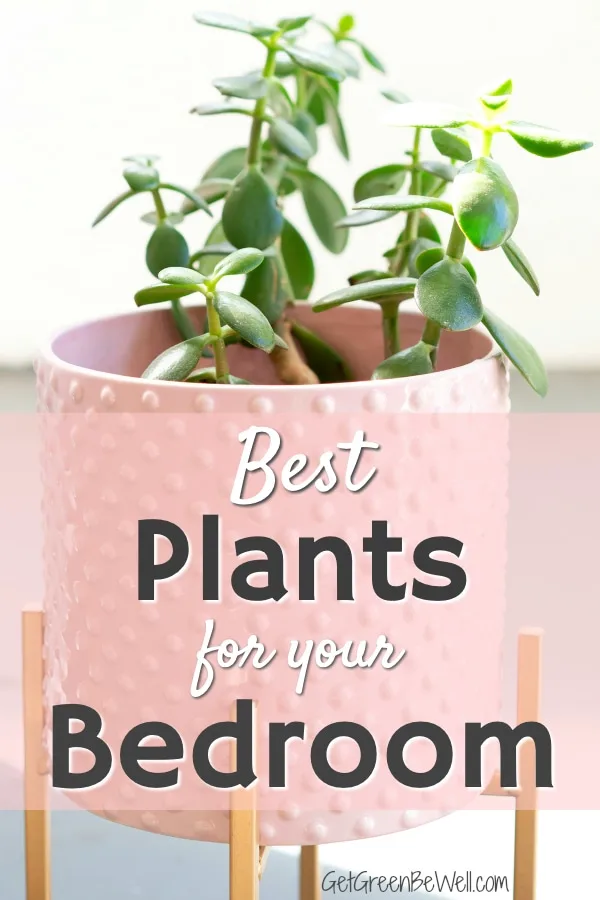
If you’ve got a tiny window or keep the curtains closed when you’re gone, then low-light plants such as Golden Pothos could be a winner for you.
Keep in mind your pets. If you’ve got a dog or cat that loves to chew things, make sure you check out the potentially toxic effects of a pet eating the plant that you are choosing. And if your cat loves to knock things off countertops and shelves, then a hanging plant is best for you.
Plants can be added anywhere in your bedroom. Add houseplants to shelves, in hanging baskets and in floor planters. As long as the light conditions are good and you have easy access to watering the plant, there is no other rules as to where you can add them to a room.
If you are buying new soil, there is a chance you could have a fungus gnat infestation. It’s not common, but it happens. If you notice tiny gnats flying around after using new potting soil, check out this chemical-free way to get rid of fungus gnats.
Don’t overwater. Though you might think that you’re doing the plant a favor, you’re not. Many of the plants that are best for removing toxins are hardy plants, and they can take a lot of neglect.
Too much water can actually kill the plant, compared to leaving it too dry for a few days. Only water when you can stick a finger one inch into the soil and it’s dry. Otherwise, mold can become a problem on houseplants and you don’t want THAT in your bedroom.
Related Posts:
- How to Darken Your Bedroom for Better Sleep
- Best Ways to Declutter your Bedroom to Sleep Great Tonight
- How to Make Your Bed More Comfortable for Cheap
- Magnesium Topical Spray for Better Sleep


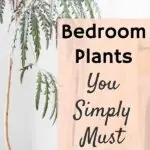
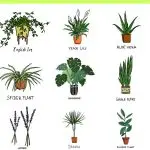
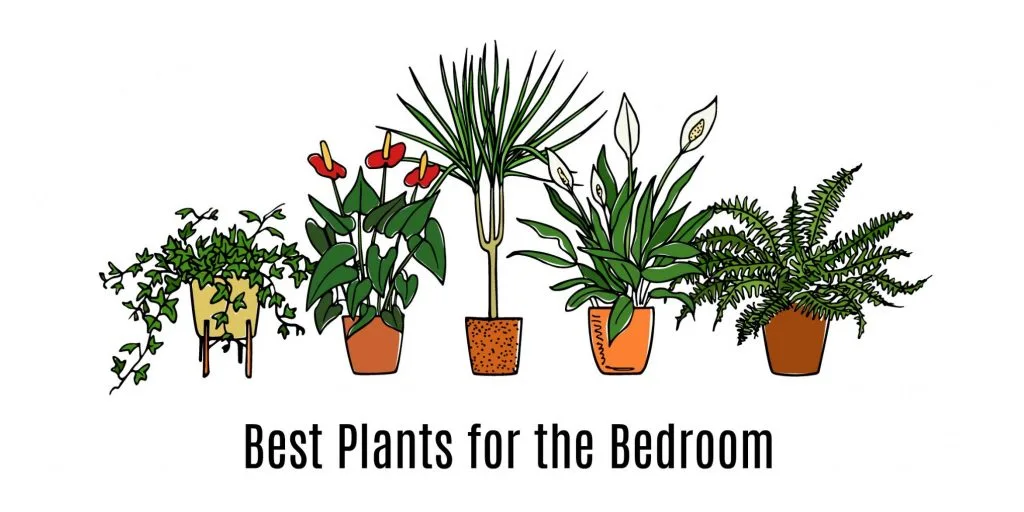
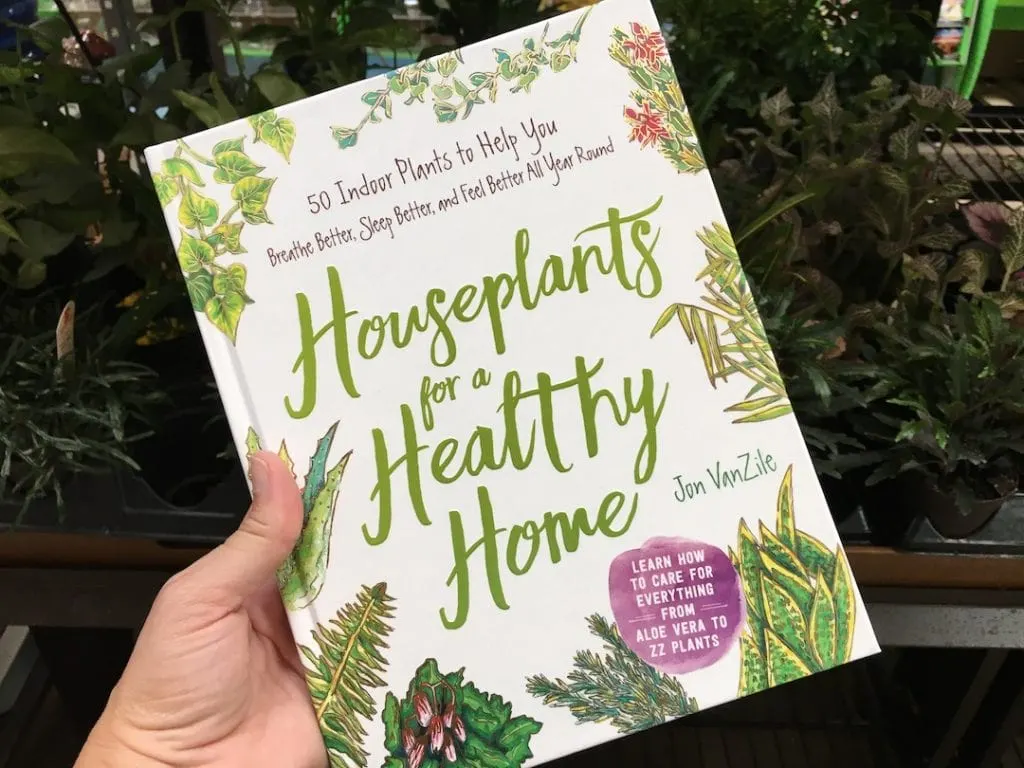
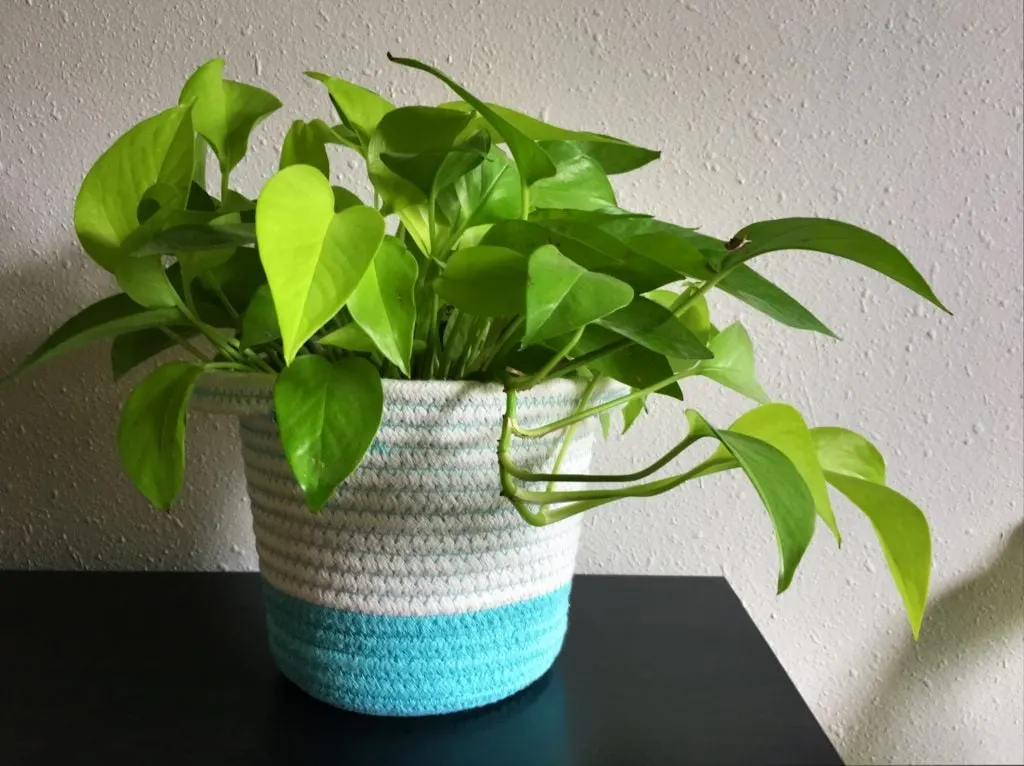
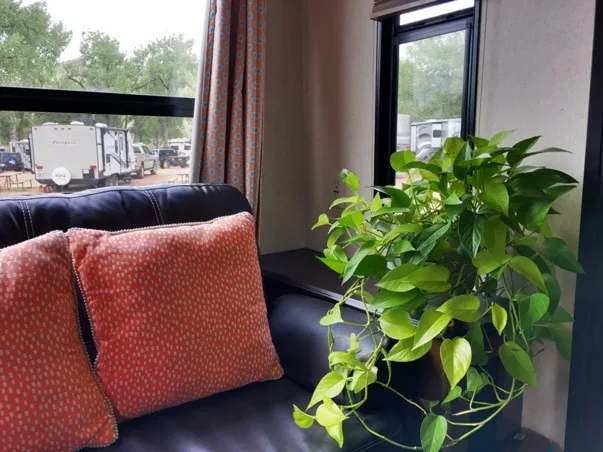
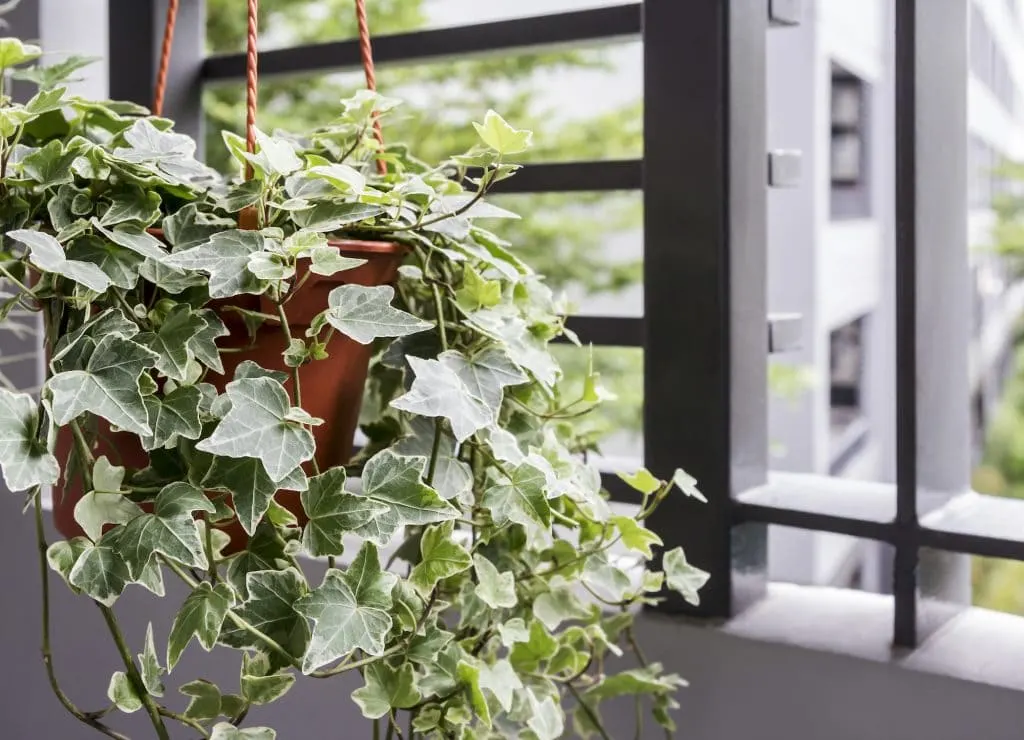
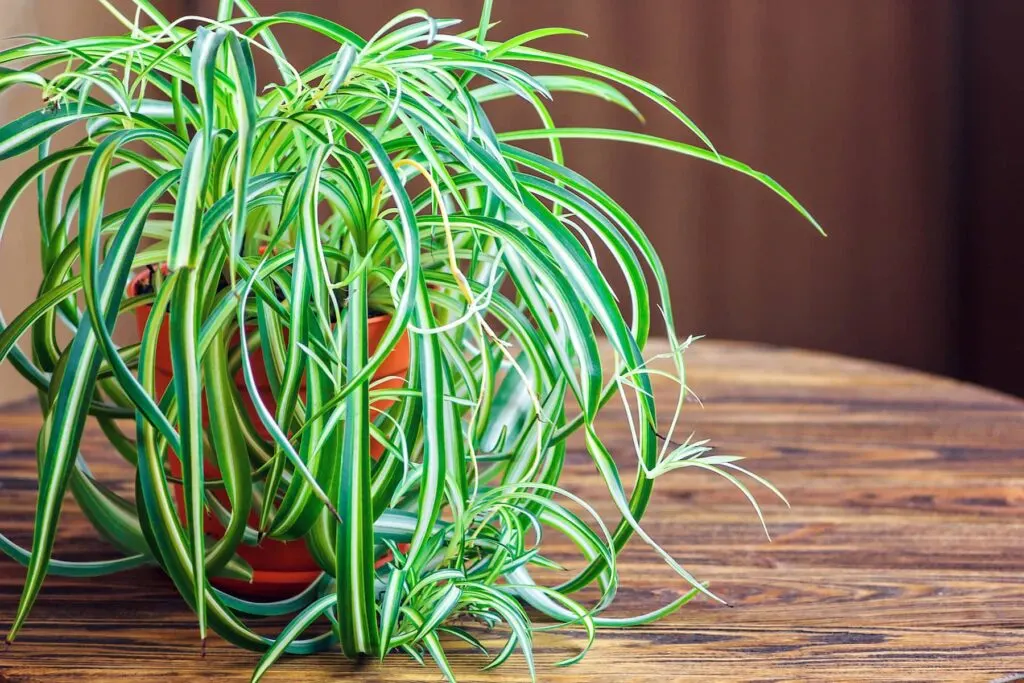
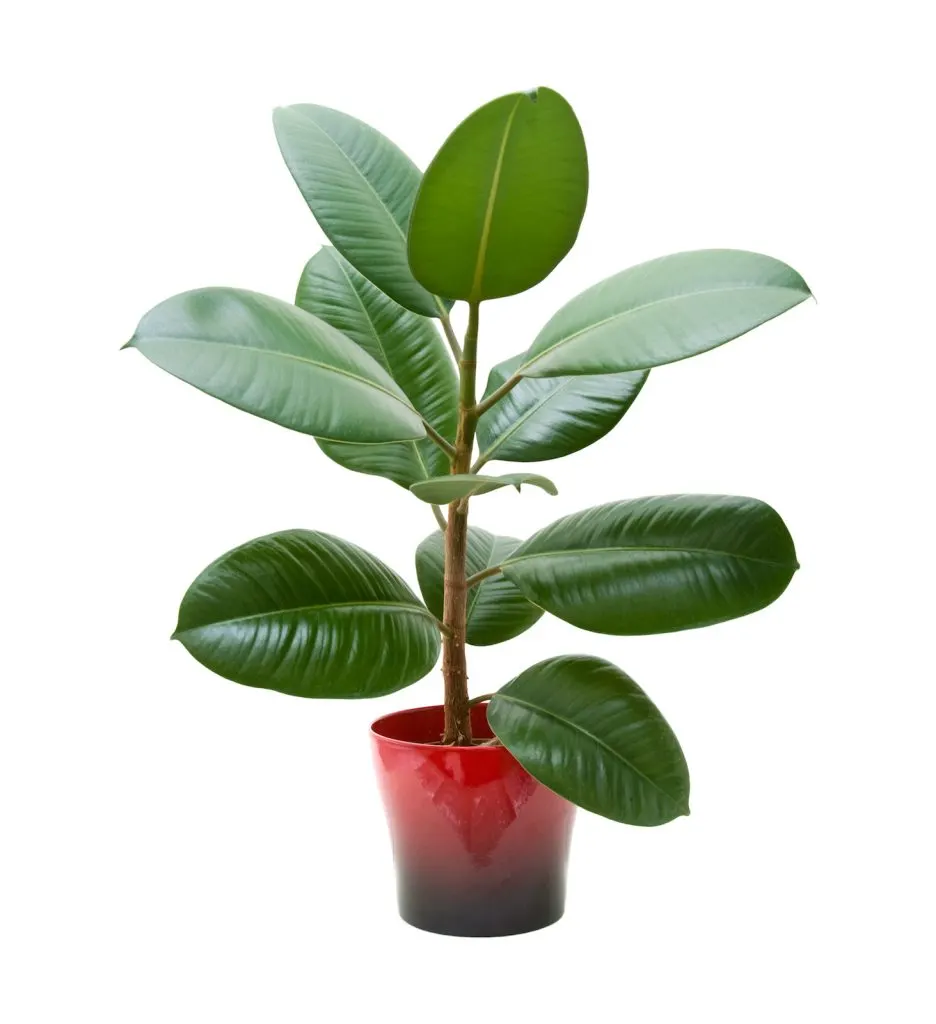
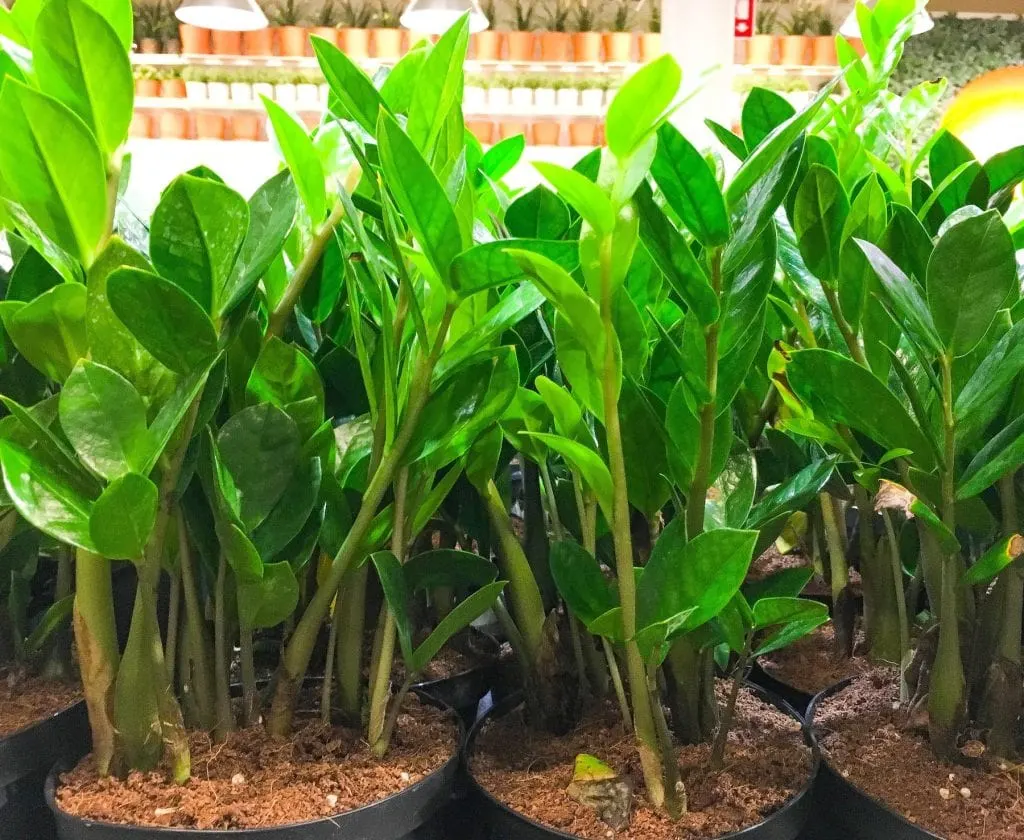
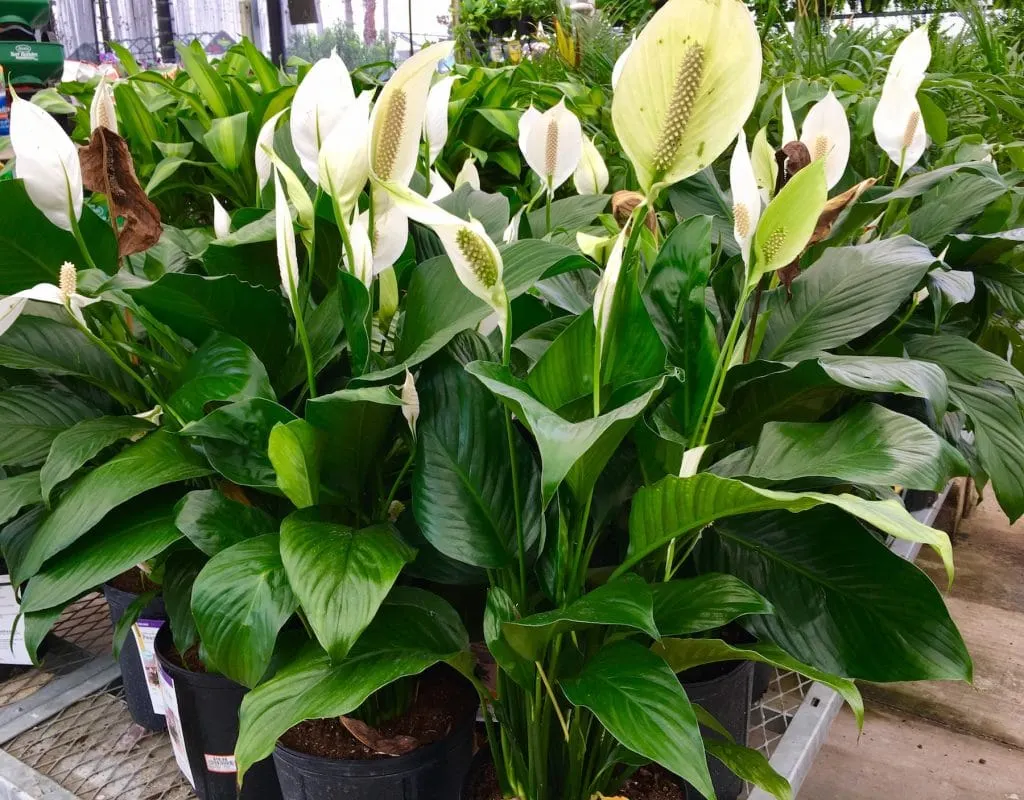
B
Monday 24th of August 2020
I'm wondering if all varieties of Pothos produce oxygen at night? Or is it only the golden Pothos? I believe I have a jade Pothos, but I'm not sure. It's fully green leaves. Thanks!
Kimberly Button
Friday 18th of September 2020
I'm not sure. Studies have focused on golden Pothos. I haven't found a study showcasing another type of Pothos, yet, so I can't guarantee it.
Top Natural Living Blogs You Should Check Out - A Blissful Blue
Monday 25th of March 2019
[…] HOW TO GROW AND BLEND YOUR OWN TEAS PLASTIC WRAP ALTERNATIVES FOR STORING AND HEATING FOOD BEST BEDROOM PLANTS FOR BETTER SLEEP […]
5 Awesome Eco-Friendly Valentine's Day Gifts | Finding Our Green Life
Thursday 3rd of January 2019
[…] If you’re looking for a plant specifically for the bedroom, my friend Kimberly over at Get Green Be Well has you […]
12 Experts Give Their Best Health Tips • Healthy Living in Colorado
Monday 19th of November 2018
[…] GetGreenBeWell.com […]
Bren Murphy
Wednesday 11th of July 2018
Love these suggestions! I have a few parlour palms growing in a glass open top terrarium and they help purify our air. plus plants help with grounding and taking negative ions out of the airspace.
Kimberly Button
Wednesday 11th of July 2018
Bren, So true! Yes, plants are great with purifying the air in so many ways. So glad you found beautiful ways to incorporate plants into your home, too!